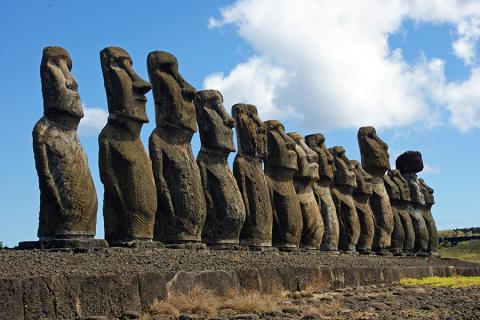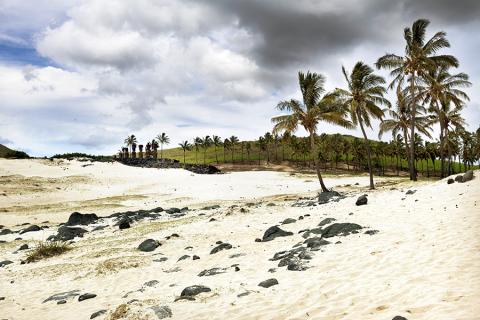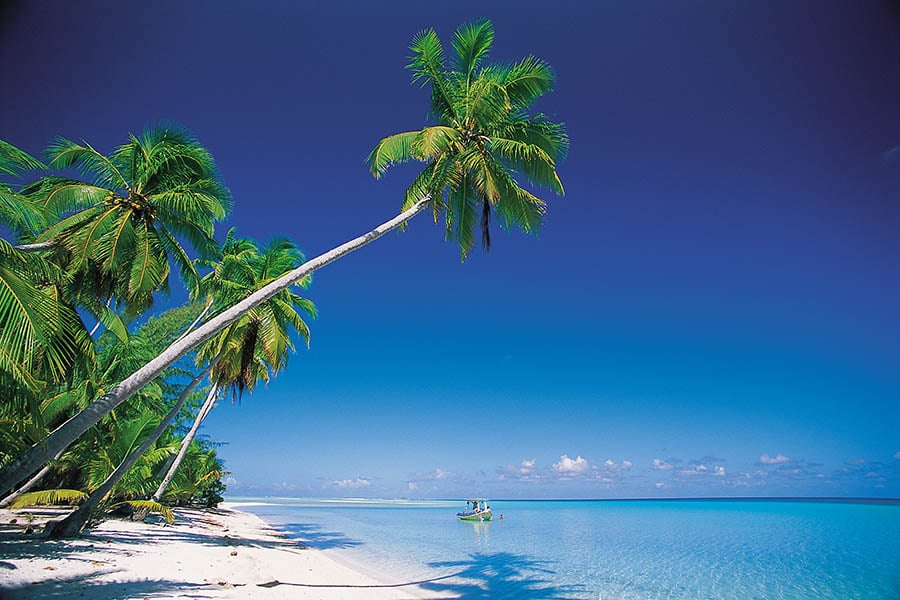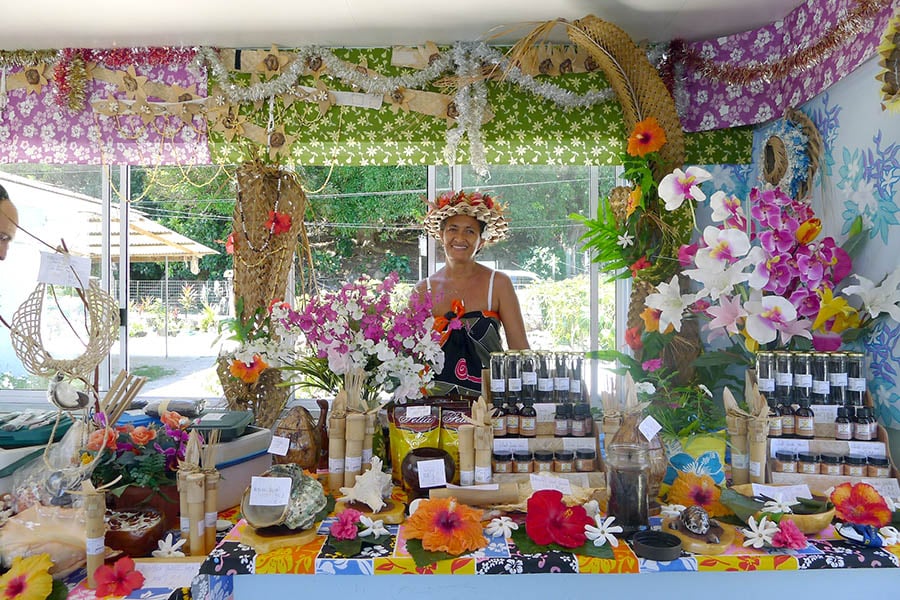
How to travel to Easter Island to see the Moai head statues
When I finally fulfilled my ambition to reach Easter Island (also known as 'Rapa Nui' or 'Isla de Pascua'), I was rewarded with the much-anticipated sight of the famous Moai statues that I'd read so much about. Arriving after a month of island hopping around Tahiti, we were ready for something completely different. What followed was the amazing realisation that we were stood in one of the most isolated places on earth.

Where is Easter Island?
Lying 4,000km from the islands of French Polynesia and 3,700km off the Chilean coast, Easter Island is one of the most isolated places in the world, so a true sense of awe and mystery surrounds it.
You'll need just a few days to explore the whole island, so it’s very easy to make this a pit stop between Australasia and South America. In all, we spent 4 nights enjoying the island which felt about the perfect length of time. Any less would have felt rushed, but we could happily have stayed a bit longer.

Discovering the mysterious ‘Moai’ heads
You’ll soon discover that there are many different explanations for the creation of these statues, but no one knows why for sure. One of the best ways to hear all the legends is to book a local English-speaking guide who will introduce you to the significant sights and give you a better understanding of the island’s history.
Some people believe the stone heads are intended to help protect the islanders from the sea and other tribes. At Rano Raraku, you can visit an abandoned quarry and see hundreds of half-finished statues, leading to another unanswered question – “why did they suddenly stop?” Again, explanations range from the onset of famine, war, or disease brought by Europeans, or perhaps even some kind of natural disaster – the mystery is unsolved.
All around the island are platforms, or ‘Aru’s’, which contain between 1 and 15 statues – mostly located along the coast and facing inland. A single Moai statue could be 20m tall and weigh up to 200 tons, taking a team of 5-6 men a whole year to make, using just hand chisels, which is simply astounding to comprehend. How these huge statues were transported miles from where they were carved is uncertain, but it adds to the mystery of the whole island!
Itineraries and where to stay on Easter Island
Wherever you stay, it seems you'll be well located and there is only one real township called 'Hanga Roa' with everything you need within easy reach. There’s a bank, plenty of small eateries, a supermarket, bikes/jeeps for hire and some Maoi statues dotted about the town. You’ll also see plenty of locals (‘Rapanui’) on horseback!
Once you step outside of Hanga Roa it's incredibly green and there are lots of wild horses, there's a real sense of isolation along the rugged coastline and stormy seas. With a basic map we explored the island and the quarry and found Maoi statues are absolutely everywhere; some upright, some fallen, some unfinished, each with its own fascinating story.
A guided itinerary will take you to the main sights, including the incredible extinct volcano ‘Ranu Kao’. It’s a 2 hour walk to the top, or you could be driven up and walk down! Legend tells of a gruelling annual leadership competition that used to take place here, which is fascinating. Contestants had to swim out and collect the first egg of the season from Motu Nui islet, swim back and then scale the cliffs of Easter Island to reach the village of Orongo - the winner being known as the 'bird man'. It's spectacular once you're there and around the Volcano rim you can reach the Orongo archaeological site; a ceremonial village with tiny stone dwellings and rock carvings.

Don’t miss…
The island itself is really small (about 11km wide by 23km long), so it’s not difficult to explore independently or with a guide – and these are some highlights not to miss:
Spectacular sunrise and sunsets: the generally rocky coastline makes a great place to catch the sunset behind some Moai statues. In fact, just a short walk north of the main township, whilst the waves crash against the rocks is easily one of the best sunsets I have ever seen!
Climbing the volcano for panoramic views: the incredible extinct volcano Rano Kau is not far from the main township, Hanga Roa where most people stay.
Heading to the beach: Anakena Beach is particularly scenic and has tempting white sands. It’s near to some well restored statues and is great for swimming but it’s on the far side of the island so you’ll need transport to get there.
Taking to the water or getting active: from surfing and scuba diving to mountain biking, trekking and horse riding, you’ll quickly find that Easter Island is a destination that has something for everyone.

How do you get to Easter Island?
Like most people, we arrived via Lan Chile, the Chilean National Airline and at present (June 2017) Lan is still the only carrier fly to Easter Island. They operate one flight per week from Tahiti (a 5 hour flight) and 8 flights a week from Santiago (a 6 hour flight).
Since the island is so isolated, direct return flights from Santiago can cost anywhere between £450 and £800 at peak times. But the good news is that you can fly to Easter Island affordably with two flexible round the world tickets we offer. Both tickets include Easter Island as a free stopover, which is how I visited. These tickets are excellent value for money and allow up to 16 flights for around £2,500. The ticket routing also allows for a stopover in Tahiti, between Easter Island and New Zealand.
With a little planning and some help from us, it can be very easy to get to Easter Island as part of your round the world trip, as part of a Chile or South America itinerary, or even on your way back from a holiday in the South Pacific Islands of Tahiti.
Practical advice
One thing to mention is that if you're arriving from Tahiti and you’ve been used to taking cash out of the wall, be prepared that there aren't many ATM machines on the island. Pesos are best but US dollars may also be accepted in some places.

Combine two Pacific islands in one trip: Easter Island & Tahiti
Tahiti is home to incredible beaches, turquoise lagoons and some of the worlds’ best diving. Its totally different style of island living contrasts dramatically with Easter Island’s mystery and offers a perfect balance as you hop across the Pacific.
Easter Island remains one of the most amazing places I've visited. I absolutely loved it and highly recommend making the most of the opportunity to visit if you’re flying through Santiago or crossing the south Pacific.
Want to travel to Easter Island?
If you’d like to find out how to include Easter Island on your round the world trip or as part of a multi-centre South America holiday, I can show you how. I can arrange all flights, transfers, accommodation and tours to suit your style and budget, and ensure you make the most of your time on Easter Island.
Remember: if you’re crossing the Pacific between Australasia and South America, you have a golden opportunity to visit two of the most incredible islands in the world, rather than bypassing them thousands of miles above! To start planning your trip, just contact Chris.

About the author Chris West
Senior Travel Consultant
With his studies in Geography and Master’s degree in development behind him, Chris set off to leave pretty much no mountain unclimbed. His passion for adventure has driven him to climb both Kilimanjaro and Annapurna Base Camp in Nepal and he and his wife have also traversed Canada and all the way down through the Americas by bike! Even starting a family didn’t really slow down Team West, as they took their little daughter on a campervan road trip through the US National Parks. Chris joined Travel Nation as a round the world specialist in 2011 and is also one of our Business Class consultants. He really enjoys helping other families put together trips they’ll never forget.

Last trip:
Indonesia



















